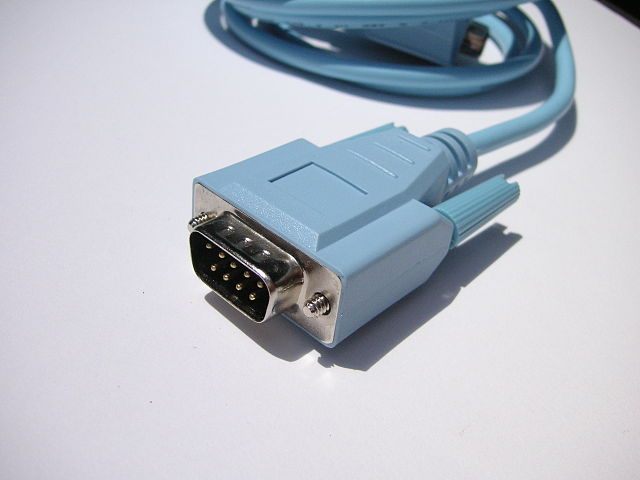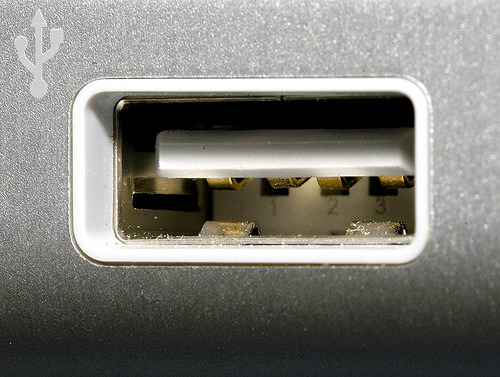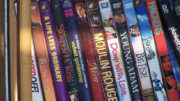In a recent podcast, I gave the surprising and unpopular opinion that USB should be on its way out. This podcast got a lot more engagement than most, so I thought it would be fun to blog a little more about why I think USB should be replaced and what could possibly replace it.
USB was awesome when it first launched
The USB standard was first launched in 1996. Some things from 1996, like the music of TLC, have stood the test of time. Other things, like wearing your hat backwards and making gang signs with your fingers for no reason, haven’t. USB is probably somewhere in the middle.
Before USB, connecting up something to your computer was an incredible mess. There was one connector for your printer, one for your mouse, and a different one for your monitor. These were big connectors by today’s standards, although it’s worth pointing out that they seemed small compared to what came before them.
These connectors were a big issue
The biggest problem with these connectors was that they were impossible to keep untangled. In order to make it possible for people to disconnect them without a screwdriver, most cables had long posts that could be turned by hand. Here’s an example, courtesy of Wikipedia.

In case you are lucky enough to have never used these, they were an incredible pain. The design of the connector meant that it would snag every single wire it was near and it made connection and disconnection very difficult. Plus, the pins inside were delicate and some of these connectors were still about 3 inches long. That’s obviously a non-start for connecting something like a phone. To top it all off, the standard these cables used was designed for things like floppy disks. It was painfully slow by today’s standards.
That’s why USB was such a breath of fresh air. One connector for everything. You could link things together or use hubs to add more ports easily. As far as speeds, the USB 1.0 standard was quite speedy for its day. Later versions got even faster. Today, it’s rare you would need anything faster than a USB connection unless you were a professional video creator.
Things did get better for a while
As small as the USB connector was compared to older plugs, it was still fairly big when you’re talking about trying to connect to a phone or tablet. It also had other issues. The original USB 1.0 and 2.0 standards are unidirectional meaning that the cable always had a different connector on each side. I’m sure you remember the days of the MicroUSB connector, used for connecting to 2010s-era Androids. I hated it, and I’m sure you did too.
In order to address some of the basic issues with USB as it existed ten years ago, a new connector was developed with a new standard. At the time it was called USB 3.1.

I’m sure that I don’t need to introduce you to the USB-C connector. It’s a big improvement over earlier connectors in a lot of ways. It doesn’t have a “top” or “bottom” so you won’t have problems plugging it in. It’s bidirectional, so it has the same connector on both sides. It’s small enough to work on a phone. It moves data at speeds fast enough for probably 99% of people. And, it can safely carry enough current to power a monitor or nearly anything else connected to it.
So that sounds good, and it was. Until it wasn’t.
Problems with USB-C and the USB 3.1 standard for data transmission started almost immediately. As small as the connector is, it’s huge compared with Apple’s Lightning connector. That meant Apple didn’t adopt it for years. We’re finally starting to see Apple products with USB-C after over a decade.
That wasn’t the worst of it. Intel’s Thunderbolt standard, which competes with USB, uses the same USB-C connector. In most cases one port can supply Thunderbolt and USB, but it brings up a lot of confusion as to what connects to where.
Then, there’s the naming issue. For some reason which I don’t understand, USB 3.1 was essentially renamed USB 3.2 gen 1. Other, faster flavors of USB were called USB 3.2 gen 2 and USB 3.2 gen 2×2. All of these use the same connector and there’s no labeling that shows what you’re actually getting. Luckily, most folks are just fine with USB 3.2 gen 1 speeds, but if you’re a pro it makes things very confusing.
And then there’s USB4.
At least there will be. The USB4 standard was approved in 2019 but it’s practically impossible to find any devices that use it.
USB4 will supposedly unite all the flavors of USB and fix all the confusion. One USB4 connection must be compatible with all forms of USB 3.2 as well as Thunderbolt. Not only that, it will natively support other forms of transfer like PCI Express. It will do this with speeds that are so fast that normal humans can’t even comprehend.
Or so they say. I don’t believe it.
The same people who made a mess of USB 3 are in charge of USB4 and I don’t expect great things. I mean just look at the names. The original USB standard was just called USB. The next was USB 2.0, the next was USB 3.0, 3.1, and 3.2 (keep in mind that in some cases the names changed but nothing else did.) Now it’s USB4. Note that there’s no space between the “B” and the “4.” This is what the USB group is worried about, as opposed to making something that consumers won’t be confused by.
My proposal: Call it “NB” if you want
“NB” stands for “next bus” or whatever you want. The name is the least important thing. Here’s what it needs to have:
- 100% backwards compatibility with all flavors of USB with no configuration
- 100% backwards compatibility with NVMe, PCI Express, Thunderbolt, and anything else that might travel over a USB-C connection
- Carry the same amount of current as a regular wall-type power cord
- Be fast enough that no one is going to mess with a new standard for at least 10 years
- Connector smaller than Apple’s Lightning connector
While I’m at it, I want a wireless spec for it that’s backwards compatible with all flavors of Bluetooth, but can transfer information up to 100Mbps. That’s not as fast as Wi-Fi 6 but it’s fast enough in most cases.
It can be done
I’m sure there are folks out there who think it’s impossible. Or perhaps they think what we have is good enough and doesn’t need to be monkeyed with. I disagree on all points. I think that it’s achievable. It won’t be easy but it can be done. More importantly it should be done. It should be done now, because it will take 10 years before it becomes the unquestioned standard. That’s how long USB took, after all.
It’s time to put the USB madness behind us. Its time has passed. Like low-rise pants and dial-up, it’s something from the 1990s that fit us really well then. There’s nothing wrong with saying that. But there’s also nothing wrong with saying that it doesn’t fit us very well now.





